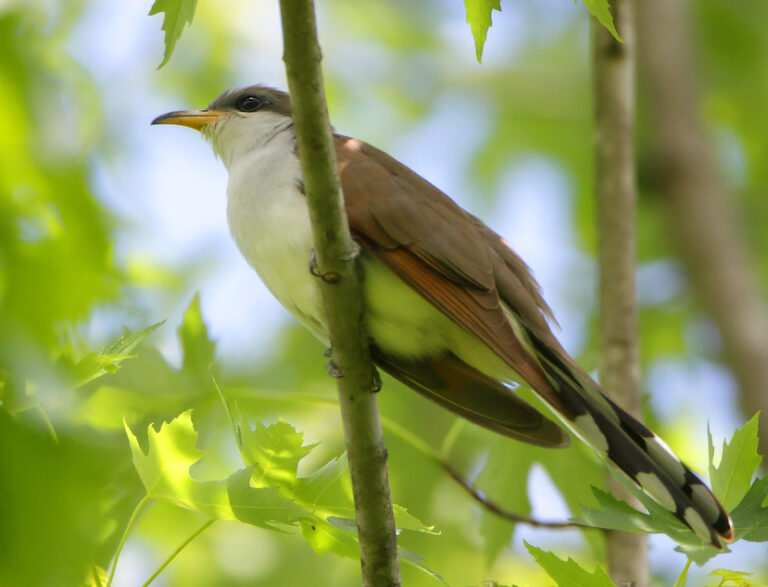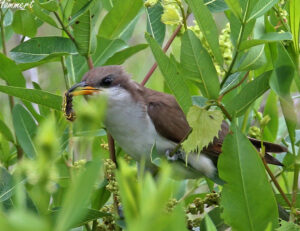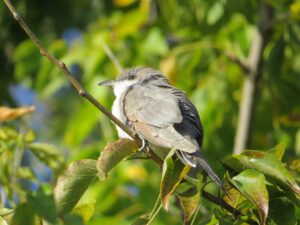
Yellow-billed Cuckoo, Coccyzus americanus
Bill Rowe
It’s hard to get familiar with Yellow-billed Cuckoos; they seem a bit retiring and standoffish as they steal through the foliage, giving you a partial view here and there. But if you persist, you may find one simply sitting in the open where you can study it at your leisure; there’s no predicting. Once you learn the cuckoo’s song—a series of strange, hollow, decelerating clucks—you will notice it frequently as you hike through forested areas in the summer, though you probably won’t see the species in your yard except possibly as a migrant in spring or fall. Cuckoos eat large insects, especially caterpillars, and in particular the tent caterpillars that sometimes occur in large outbreaks, with gauzy webs full of larvae. Be aware of two things that are not true of our American cuckoos: they don’t go “coo-coo” like the famous cuckoo clock, and they don’t lay their eggs in other birds’ nests. Both of those behaviors belong to the Common Cuckoo of Europe, Asia, and Africa.
IDENTIFICATION: A Yellow-billed Cuckoo is a slender, long-tailed bird about the size of a Blue Jay, brown above and white below, with a decurved bill that is yellow on the bottom half (called the mandible). Its tail feathers, from below, have big white tips that are obvious with any decent view, and its outer wing feathers (the primaries) have a lot of rufous color in them. A less common relative, the Black-billed Cuckoo, is similar but has much narrower whitish tips to the tail feathers, little or no rufous, and a black bill (but young Yellow-billed Cuckoos in fall may also have a dark bill for a while).
ST. LOUIS STATUS: Yellow-billed Cuckoo is a fairly common summer resident of Missouri woodlands that mostly arrives in May and departs in September, spending the winter south of the border. It is found throughout the eastern United States and parts of the west. The Black-billed is a northeastern/north-central bird, found here in small numbers, and in south Florida coastal areas you might glimpse a third species, the elusive Mangrove Cuckoo.
Learn more and listen to the odd songs and calls of Yellow-billed Cuckoos here.


Yellow-billed Cuckoo with prey
Photo Credit: Doug Hommert
Young bird, October. Bill still rather dark,
paler below but not yet yellow.
Photo Credit: Bill Rowe




